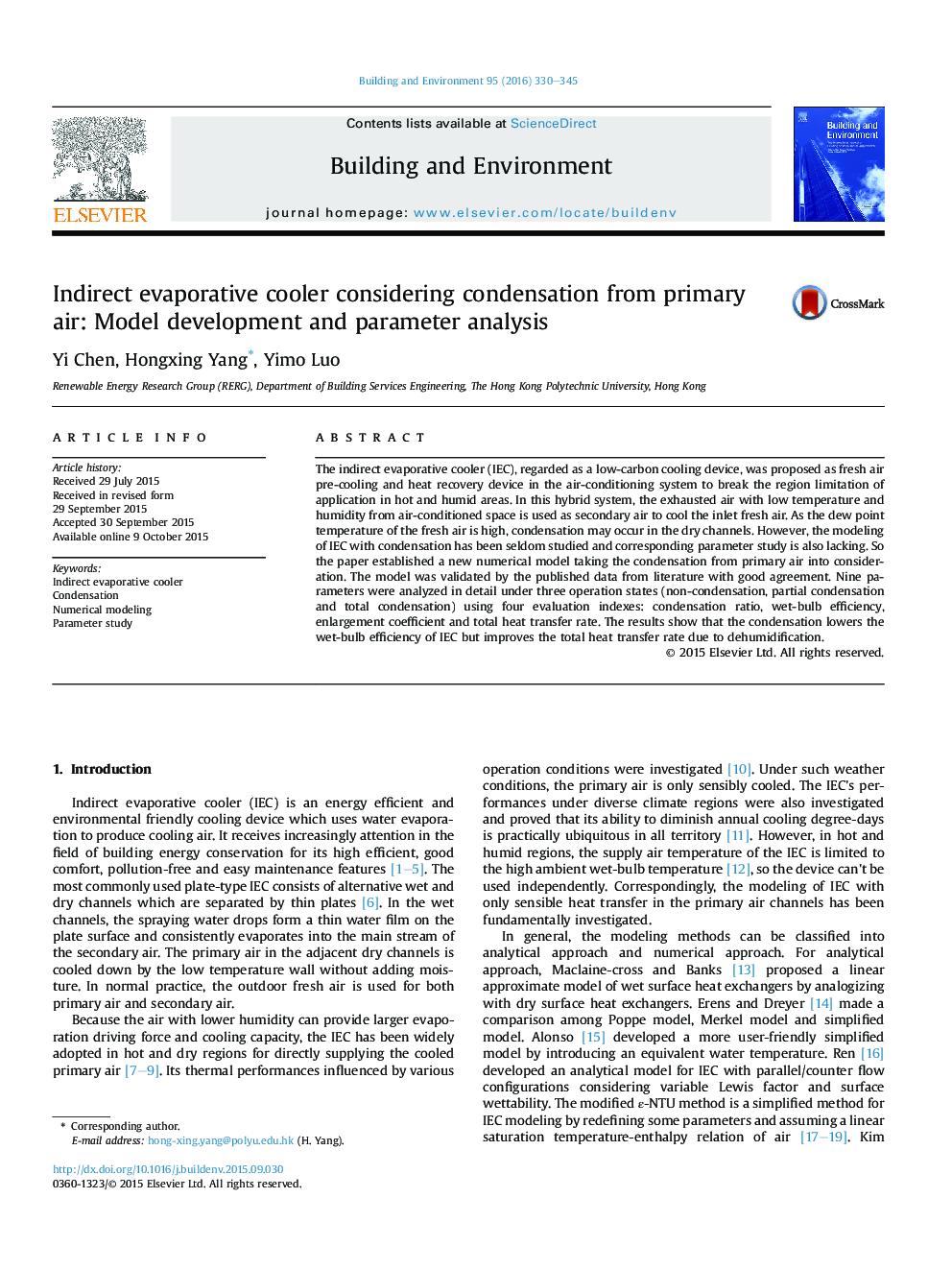| کد مقاله | کد نشریه | سال انتشار | مقاله انگلیسی | نسخه تمام متن |
|---|---|---|---|---|
| 247779 | 502526 | 2016 | 16 صفحه PDF | دانلود رایگان |
• A new numerical model of IEC considering condensation was established.
• Nine parameters including air conditions and unit configurations were studied.
• Influence of each parameter was compared and analyzed under three operation states.
• Thermal performance of IEC with condensation was evaluated by four indexes.
The indirect evaporative cooler (IEC), regarded as a low-carbon cooling device, was proposed as fresh air pre-cooling and heat recovery device in the air-conditioning system to break the region limitation of application in hot and humid areas. In this hybrid system, the exhausted air with low temperature and humidity from air-conditioned space is used as secondary air to cool the inlet fresh air. As the dew point temperature of the fresh air is high, condensation may occur in the dry channels. However, the modeling of IEC with condensation has been seldom studied and corresponding parameter study is also lacking. So the paper established a new numerical model taking the condensation from primary air into consideration. The model was validated by the published data from literature with good agreement. Nine parameters were analyzed in detail under three operation states (non-condensation, partial condensation and total condensation) using four evaluation indexes: condensation ratio, wet-bulb efficiency, enlargement coefficient and total heat transfer rate. The results show that the condensation lowers the wet-bulb efficiency of IEC but improves the total heat transfer rate due to dehumidification.
Journal: Building and Environment - Volume 95, January 2016, Pages 330–345
